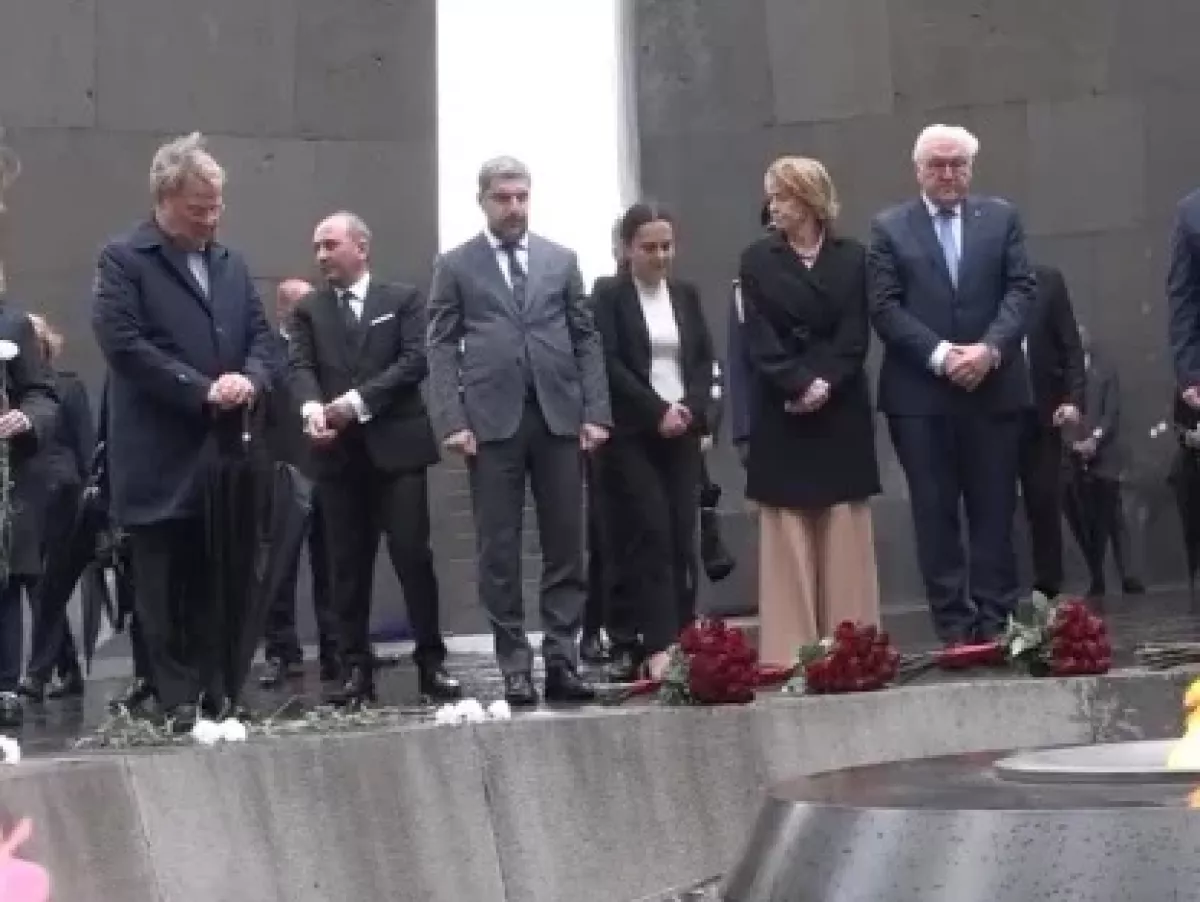German president’s Armenian missteps: Unfavorable diplomacy awaits in Azerbaijan
German Federal President Frank-Walter Steinmeier's visit to Armenia and Azerbaijan, which began on March 30, is at risk of ending in a diplomatic scandal. The visit, which started with a trip to Armenia, is scheduled to continue in Azerbaijan on April 2. However, serious mistakes made by Steinmeier’s press service during his stay in Armenia may cast a shadow over his upcoming visit to Baku.
The controversy started with a post on Steinmeier's official Instagram page that included the following text: “The conflict concerns the Nagorno-Karabakh region. From the point of view of international law, this region belongs to Azerbaijan. However, Armenians mostly live there. There have been repeated military clashes there over the past decades.”
This statement is deemed provocative for a number of reasons. Firstly, the term “Nagorno-Karabakh” does not represent a recognized territorial unit within Azerbaijan. Secondly, the region historically hosted both Armenians and Azerbaijanis, the latter of whom were violently expelled from their homes. Additionally, the post featured a flag associated with Karabakh separatists, which has been claimed as the "flag of the NKR."
Громким дипломатическим скандалом может завершиться визит федерального президента Германии Франк-Вальтера Штайнмайера в Армению и Азербайджан. Напомним, турне Штайнмайера в наш регион началось 30 марта с посещения Армении, а уже 2 апреля он должен посетить Азербайджан. Однако во… pic.twitter.com/hVYJzXc5yn
— Caliber (@Caliberaz) March 31, 2025
Despite these issues, Steinmeier’s visit is being framed as an effort to support long-term stability and peace in the South Caucasus. His press service stated that the president’s trip was meant to “send a signal of support for the peace process.” However, this message of peace is undermined by the apparent backing of revanchist sentiments in Armenia, raising questions about Berlin's stance on the issue.
Steinmeier’s visit to Armenia also included a trip to the memorial dedicated to the “victims of the Armenian genocide” in the Ottoman Empire. During this visit, the German president’s press service published a statement claiming, “During the genocide of 1915, the Ottoman government killed up to 1.5 million Armenians. The Federal President and Elke Büdenbender pay tribute to the victims.”

This statement is seen as a clear provocation, especially considering that Steinmeier, as Germany’s former Foreign Minister, is fully aware of the manipulation surrounding the events of 1915. While he supported a Bundestag resolution recognizing the “Armenian genocide,” he had previously stated that such recognition had no binding legal force. His contradictory statements have led some to question whether this is a deliberate provocation from Steinmeier himself or a mistake by his press office.
Regardless of the source of the blunder, it creates an unfavorable backdrop for Steinmeier’s upcoming visit to Azerbaijan, where the controversy is expected to be raised.
However, this is not the first "surprise" Germany has presented during Steinmeier's visit to the South Caucasus. For instance, the platform of the German international broadcaster Deutsche Welle, which is, incidentally, funded by the federal government, released a film that seems as if it was produced by Armenian television crews and propagandists. Consider this: the film’s authors repeat the well-worn Armenian propaganda cliché that the "evil Stalin" allegedly handed over "Armenian Karabakh" to Azerbaijan. At the same time, a historical fact is deliberately omitted—the issue of Karabakh’s ownership was reviewed twice by the Caucasus Bureau of the Central Committee of the Russian Communist Party (Bolsheviks), and both times, the decision was in favour of Azerbaijan. Also left unmentioned is the fact that it was Bolshevik Moscow that handed over Western Zangezur and the eastern shore of Lake Goycha—now "Sevan"—to Armenia.
The filmmakers also did not miss the chance to repeat the old fabrication about "Syrian mercenaries" allegedly fighting on Azerbaijan's side during the Second Karabakh War. The absurdity reached new heights: footage of Azerbaijani refugees was presented in the report as "Armenians expelled from Karabakh."
The German (or perhaps Armenian?) broadcasters also mention the events in Sumgayit in February 1988 but fail to say a single word about the ethnic cleansing of Azerbaijanis in Armenia. The occupation of seven districts around Karabakh is briefly mentioned, yet there is no reference to the fact that these areas were home to hundreds of thousands of Azerbaijanis who were forced to flee their homes.
The filmmakers went so far as to criticize European Commission President Ursula von der Leyen for energy cooperation with Azerbaijan. Moreover, throughout the entire runtime, not a single Azerbaijani speaker was featured—only Armenian activists and lobbyists, primarily from France. The broadcast even included former commander of the Armenian occupation forces, Samvel Babayan—a man twice convicted of terrorism. And this is just a fraction of the absurdities that fill the film.
There seems to be an excessive number of anti-Azerbaijani actions from official Berlin. If this is how Germany intends to conduct its policy in the South Caucasus, it will lead to a dead end. And surely, this will be pointed out to Steinmeier during his visit to Baku.
P.S. As the material was being prepared for publication, a provocative post regarding "Nagorno-Karabakh" was removed from the official pages of the President of Germany.








